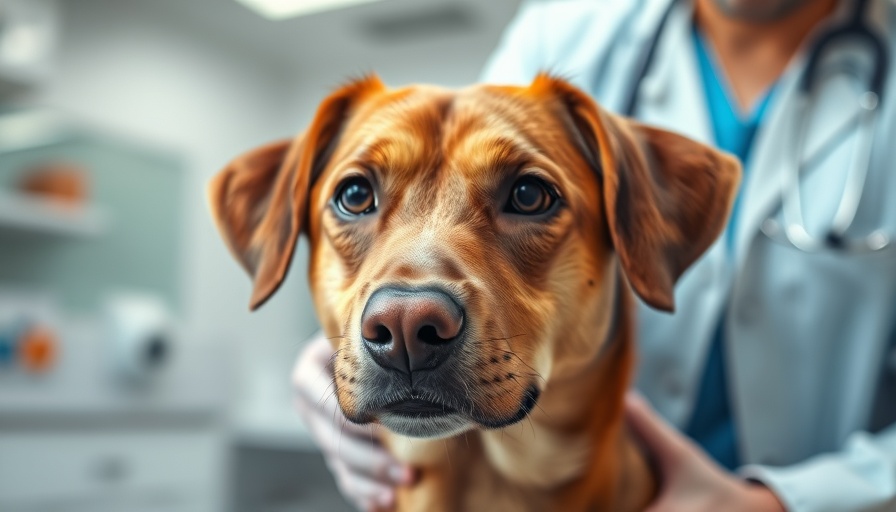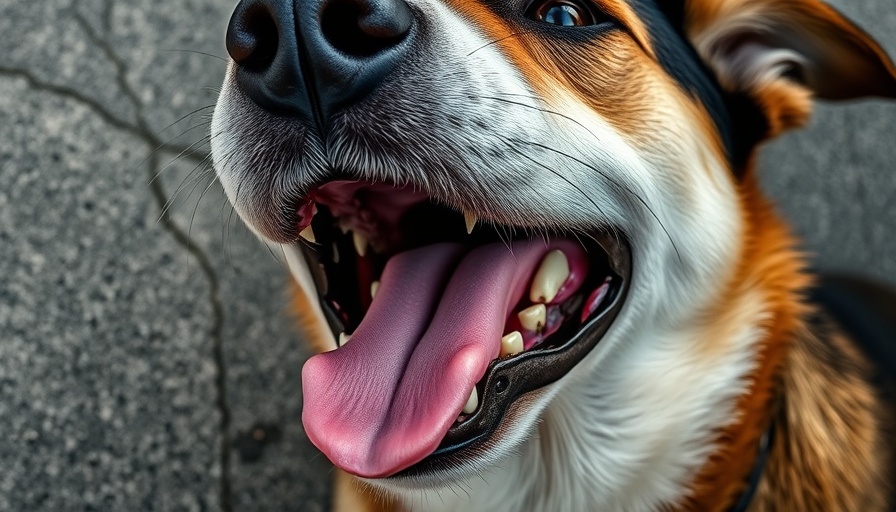
Understanding Cataracts in Our Furry Friends
Imagine looking into your beloved dog’s eyes, seeking that joyful sparkle, only to be met with a dull, cloudy appearance. This transformation could signal the onset of cataracts, a common eye condition that many dogs face. As pet parents, it’s crucial to understand cataracts, their causes, symptoms, and how to ensure our furry companions maintain a quality life in the face of this condition.
What Causes Cataracts in Dogs?
Cataracts occur when protein fibers within the lens of the eye clump together, leading to a clouding effect that impairs vision. While dogs of any breed can develop cataracts, certain breeds such as Cocker Spaniels, Poodles, and Labradors are genetically predisposed. Age and other health issues, particularly diabetes, can also escalate the likelihood of cataracts forming. Recognizing these risk factors can help pet owners take preventive measures and monitor their dog's health more closely.
Signs and Symptoms: When to Be Concerned
As caretakers, being vigilant is key. Pay attention to the following symptoms: a cloudy or milky appearance in the eyes, bumping into furniture, hesitance with stairs, squinting, and changes in behavior, especially during nighttime. It’s important to note that similar symptoms can arise from conditions such as lenticular sclerosis, which may not affect a dog's vision, but a thorough veterinary check-up is advised for any signs of eye discomfort.
Medical Insights: Treatment and Management
While cataracts in dogs can lead to severe vision impairment, the good news is that they can be treated. The most effective and widely recommended treatment is surgery to remove the cataract, boasting success rates of 85% to 90%. This procedure can restore significant vision. However, post-surgery, it’s vital to adhere to your veterinarian’s aftercare instructions and monitor for potential complications, such as glaucoma.
At-Home Support for Your Canine Companion
Beyond medical treatment, there’s much you can do to support your dog at home. Create a safe environment free from obstacles and provide a familiar routine that enhances their confidence. Utilize voice cues and gentle guidance to navigate spaces your dog may find challenging. Protecting their eyes from bright sunlight and using supplements as guided by your vet can also support eye health.
Enriching Your Dog's Life Post-Diagnosis
Receiving a cataract diagnosis does not mean the end of an active and joyful life for your dog. With surgery and supportive care, many dogs go on to not only regain their eyesight but also lead richer lives. Engage in activities suited to their current vision levels and seek the companionship of other dogs to foster socialization. Always celebrate small victories as they adapt.
Community Insight: Sharing Information is Key
As a pet parent in a community that loves our furry friends, sharing knowledge is paramount. Engaging with local pet wellness events, seminars, or even online forums can offer helpful insights and connect you with other pet owners experiencing similar journeys. It’s empowering to learn from each other and understand the best practices, not just for cataracts, but overall pet wellness.
Final Thoughts: Be Proactive in Pet Care
As we cherish our time with our dogs, being proactive about their eye health can lead to better outcomes. Regular veterinary check-ups, signs awareness, and the right care can make all the difference. Remember, our dogs rely on us not just for love but also for safeguarding their health. Keep the joy alive in their eyes, for what shines through them is a reflection of our shared love.
Call to Action: Reach out to your veterinarian today if you've noticed any changes in your dog's eyes. Stay informed to ensure your loved ones are always taken care of.
 Add Row
Add Row  Add
Add 




Write A Comment